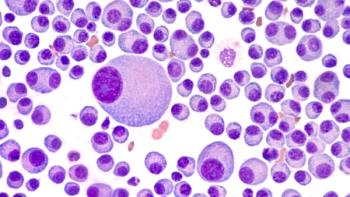
Novel Model Addresses Care Gaps in Psoriatic Arthritis
Several modalities found to be effective in the triage of psoriasis patients with musculoskeletal symptoms, according to a study presented at the 2017 American College of Rheumatology meeting.
Patients with psoriasis often have undiagnosed psoriatic arthritis; the subsequent treatment delay can result in poor outcomes. Canadian researchers have designed a new care model that uses a self-referral system and central triage clinic for psoriasis patients with musculoskeletal symptoms to address this issue, according to a study presented at the 2017 American College of Rheumatology/Association of Rheumatology Health Professionals
Annual Meeting.
“The results of our study address the gaps in care related to under-diagnosis of psoriatic arthritis among psoriasis patients,” Lihi Eder, MD, PhD, assistant professor of medicine, University of Toronto, told Specialty Pharmacy Times.
Using their institution’s electronic medical record, the researchers identified patients with psoriasis. Of this group, those experiencing musculoskeletal symptoms were assessed in a central triage clinic using the following methods:
- Use of e-psoriatic arthritis questionnaires—the Toronto Psoriatic Arthritis Screening-2 (TOPAS-2), Psoriatic Epidemiology Screening Tool and Psoriatic Arthritis Screening and Evaluation (PASE).
- Musculoskeletal ultrasound of symptomatic joints and enthuses.
- Clinical assessment by an advanced practice physiotherapist.
- C-reactive protein and erythrocyte sedimentation levels.
Then, a rheumatologist, who was blinded to the triage results, assessed whether the patients had psoriatic arthritis. Of the 152 patients who agreed to participate in this study, 94 have been assessed thus far. The rheumatologist declared that 69 (73%) patients did not have psoriatic arthritis, 17 (18%) had possible psoriatic arthritis, and 8 (9%) had the disease.
To assess each triage method, Eder and colleagues evaluated its sensitivity, specificity, positive predictive value, negative predictive value, and area under the ROC curve. Several methods appear to be effective triage tools, according to the authors.
“The results suggest that several modalities, including trained advanced care physiotherapist, screening questionnaires and targeted musculoskeletal ultrasound were useful in triage of psoriasis patients with musculoskeletal symptoms,” Eder said.
An advanced practice physiotherapist had 100% sensitivity and 71% specificity in detecting the disease in this patient population. With regard to the questionnaires, TOPAS-2 had the highest sensitivity at 88%, while PASE had the highest specificity at 87%.
Ultrasound proved useful, too, with 88% sensitivity, although specificity was a moderate 65%.
“Additionally, ultrasound identified a significant proportion of patients with joint and tendon inflammation that were not identified by the rheumatologist as having psoriatic arthritis, highlighting the potential role of ultrasound in early diagnosis of this disease,” Eder said.
Newsletter
Stay informed on drug updates, treatment guidelines, and pharmacy practice trends—subscribe to Pharmacy Times for weekly clinical insights.




















































































































































































































